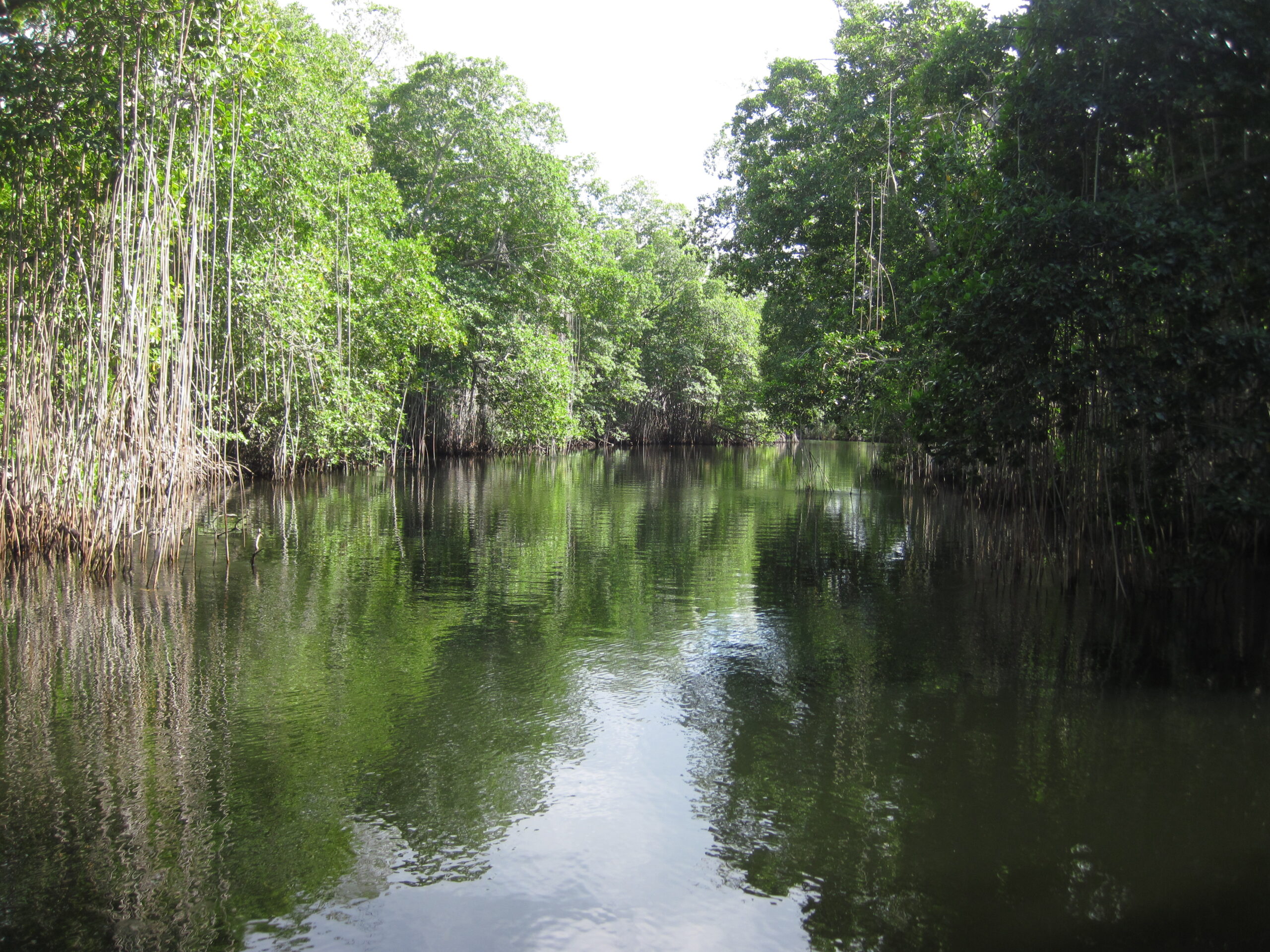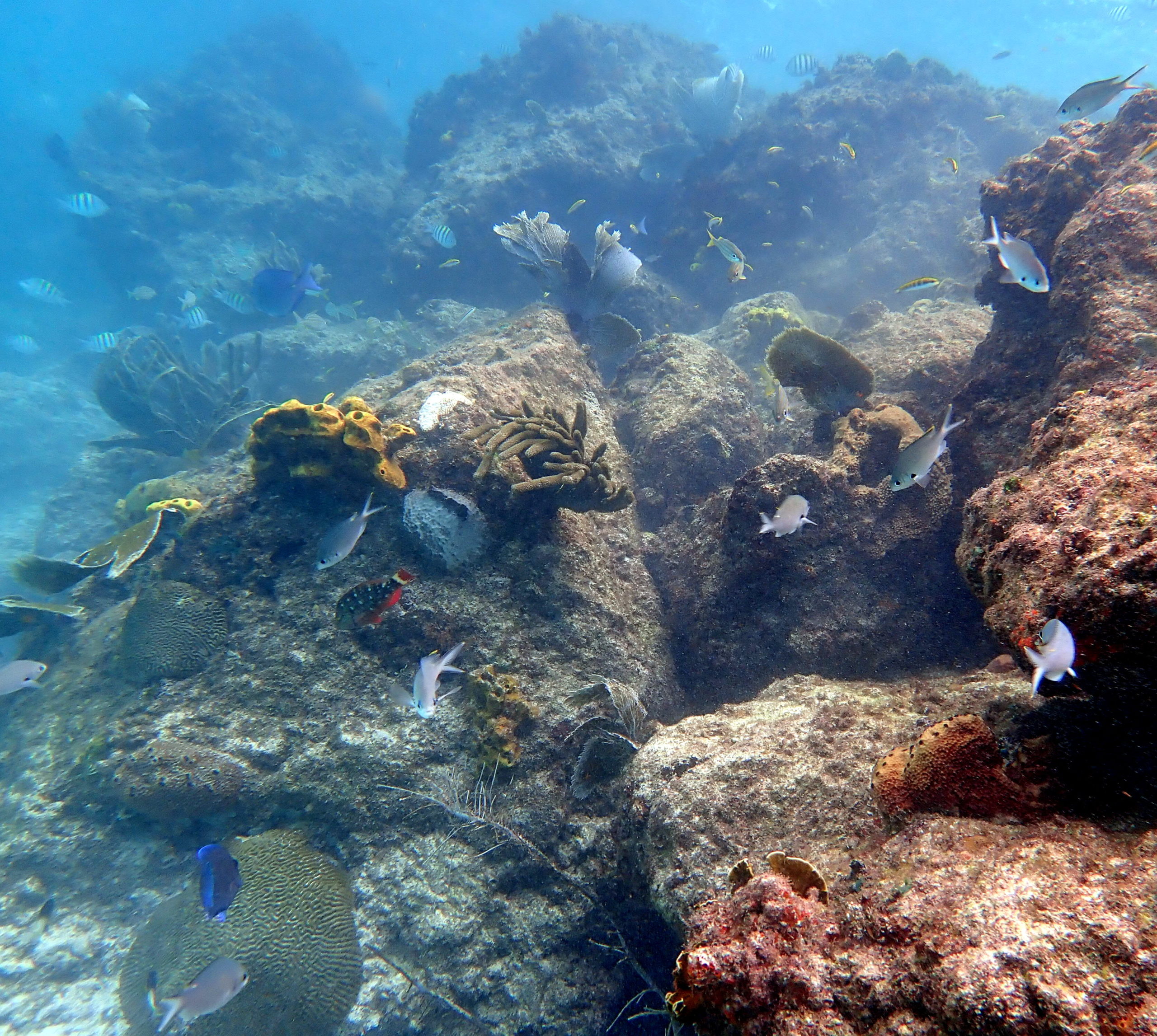Hard to believe it’s already the middle of April! Here’s a peek into what we’ve been up to lately.
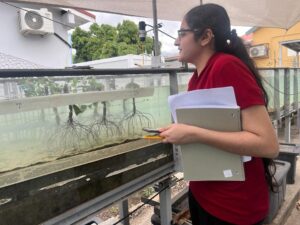 Research Intern
Research Intern
Every summer for the last 15 or 20 years we’ve been hosting engineering students for summer internships. Last year one of our interns, Ganga Laheja, decided to stay on with us as a Research Intern. She’s been digging deep into the ability of mangrove roots to attenuate waves. This research topic was initially for her group’s final year Special Investigative Project at UWI, Mona. Now the project is being continued along with Smith Warner, with the aim of publishing a paper and presenting at a conference to bring more awareness on this topic.
Last month Ganga observed wave flume testing at CEAC Solutions. The idea was to replicate and study wave-mangrove interactions in model-scale experiments. A wave flume (or wave channel) is a special wave tank in which the width of the flume is much less than its length. This kind of wave tank is well-suited for studying the cross-sections of a breakwater, for example, or for measuring wave forces on vertical cylinders with a diameter much less than the flume width (rather like the roots of a mangrove).

So far, the results have shown that most of the wave attenuation is caused by the roots of the mangroves. Their roots help to slow down water flows (reducing wave energy and height) which causes sediment deposits that stabilize the shoreline, and therefore reduce coastal erosion. The study also found that a larger vegetation width is more effective in dissipating the wave energy.
A New Project
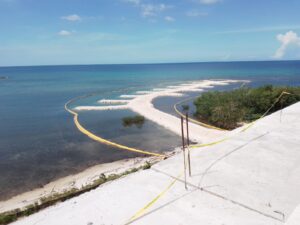 We recently started construction works for a major resort development on the north coast of Jamaica. It will include 500m of beach enhancement, a 300m revetment to protect the property from storm surge, and the creation of a flushing channel to improve water quality in the bay. To make the beach area suitable for swimming and other recreational activities we will be dredging the peaty material, which often creates an anoxic environment where marine life can’t survive. We will also construct nearshore reef-like breakwaters to protect the new beach and to provide habitat for juvenile fish and other marine creatures.
We recently started construction works for a major resort development on the north coast of Jamaica. It will include 500m of beach enhancement, a 300m revetment to protect the property from storm surge, and the creation of a flushing channel to improve water quality in the bay. To make the beach area suitable for swimming and other recreational activities we will be dredging the peaty material, which often creates an anoxic environment where marine life can’t survive. We will also construct nearshore reef-like breakwaters to protect the new beach and to provide habitat for juvenile fish and other marine creatures.
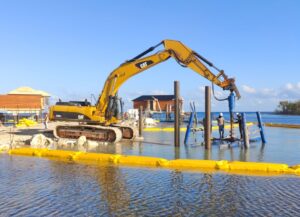
Perhaps the most exciting part is the marine piling for overwater suites. We are using an innovative method of piling – Fibre-reinforced polymer (FRP) – for this project. FRP piles are resistant to corrosion and marine borers and can withstand strong impacts from hurricanes when driven to appropriate depths. Using the right equipment, they can also be driven within a smaller footprint than other piling methods, making them ideal for protecting the sensitive marine environment. On this site, the piles are being driven 25 to 40 feet below seabed and standing up to 10 feet above water. If you’re interested in learning more about this interesting method of piling, please get in touch.
